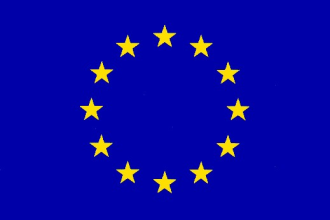THE KINGDOM OF BELGIUM,
THE REPUBLIC OF BULGARIA,
THE CZECH REPUBLIC,
THE KINGDOM OF DENMARK,
THE FEDERAL REPUBLIC OF GERMANY,
THE REPUBLIC OF ESTONIA,
IRELAND,
THE HELLENIC REPUBLIC,
THE KINGDOM OF SPAIN,
THE FRENCH REPUBLIC,
THE REPUBLIC OF CROATIA,
THE ITALIAN REPUBLIC,
THE REPUBLIC OF CYPRUS,
THE REPUBLIC OF LATVIA,
THE REPUBLIC OF LITHUANIA,
THE GRAND DUCHY OF LUXEMBOURG,
HUNGARY,
THE REPUBLIC OF MALTA,
THE KINGDOM OF THE NETHERLANDS,
THE REPUBLIC OF AUSTRIA,
THE REPUBLIC OF POLAND,
THE PORTUGUESE REPUBLIC,
ROMANIA,
THE REPUBLIC OF SLOVENIA,
THE SLOVAK REPUBLIC,
THE REPUBLIC OF FINLAND,
THE KINGDOM OF SWEDEN,
THE UNITED KINGDOM OF GREAT BRITAIN AND NORTHERN IRELAND,
Contracting Parties to the Treaty on European Union and the Treaty on the functioning of the European Union, referred to as ‘the Member States of the European Union’
Overview of the EU Market
The European Union is the largest trading bloc in the world with total EU exports valued at Euro 5,062,109 million in 2017 and total imports of Euro 4,993,189 million. With over 510 million inhabitants, EU is home to the third largest population after China and India. The largest markets in the EU are Germany (82 million people), France (67 million), UK (66 million), Italy (60 million), Spain (47 million). The smaller markets are Malta (475,000), Luxemburg (602,000) and Cyprus (864,000).
The main commodities imported into the EU are: machinery, vehicles, aircraft, plastics, crude oil, chemicals, textiles & clothing, metals, foodstuffs. The fastest growing EU imports are: clocks and watches, aircrafts, fruits, leather and animal gut articles, footwear, cereals, milk preparations, perfumes & cosmetics, cocoa and pharmaceuticals.
EU’s top 10 trading partners are USA, China, Switzerland, Russia, Turkey, Japan, Norway, South Korea, India and Canada. South Africa is Africa’s leading trading partner of the EU, accounting for 1.3% of EU total imports. The EU’s GDP is estimated at USD 18.8 trillion in 2018, representing over 22% of the global economy. The purchasing power of EU customers remains high, at an average GDP per capita of USD 37,800.
Although EU continues to pursue its integration into a single market economy, the EU market is differentiated with each Member State having its own demand needs and supply capacities. While keeping the greater pan-European perspectives on compliance issues, it is critical to devise and implement individual market entry strategies on a country-by country basis. Each country has its own market challenges and business cultures and more importantly, language barrier. There cannot be a “one size fits all” strategy to penetrate the EU market. Moreover, a single export cannot cover the entire EU market.
A viable option is to divide the EU market into different sub-markets and develop sub-regional export strategies to optimise the benefits of the Agreement: English speaking belt, French speaking countries, German speaking zone, and the emerging markets in eastern Europe.
Main challenges in the EU market can take the form of “Regulations” and “Directives”. While the former is mandatory and applicable in all Member States, the later provides general framework that must be transposed into the national legislation of each Member State.
If you wish to export to the EU, please check the “help for exporters and importers” page on the following website address:
-
https://policy.trade.ec.europa.eu/help-exporters-and-importers_en


